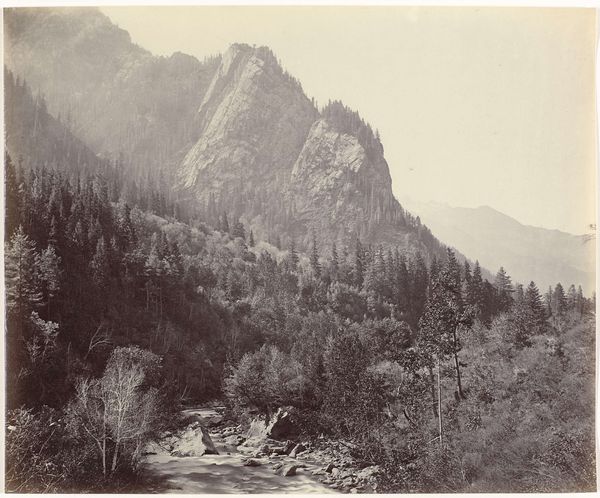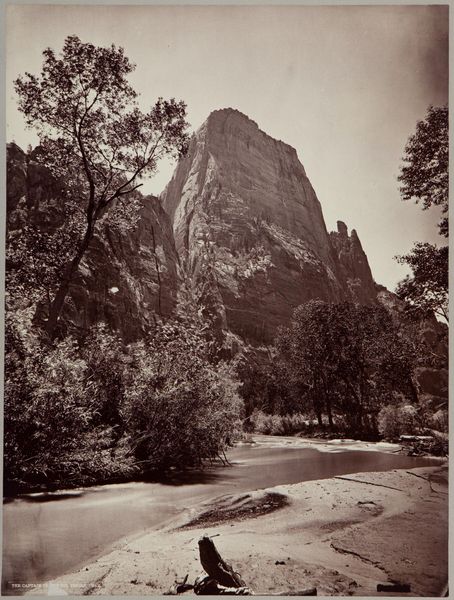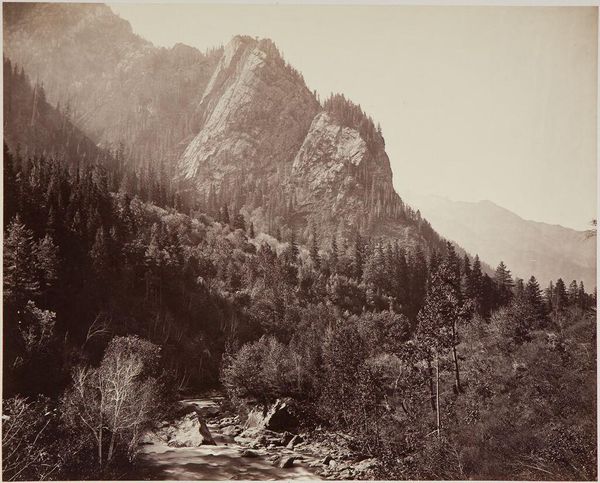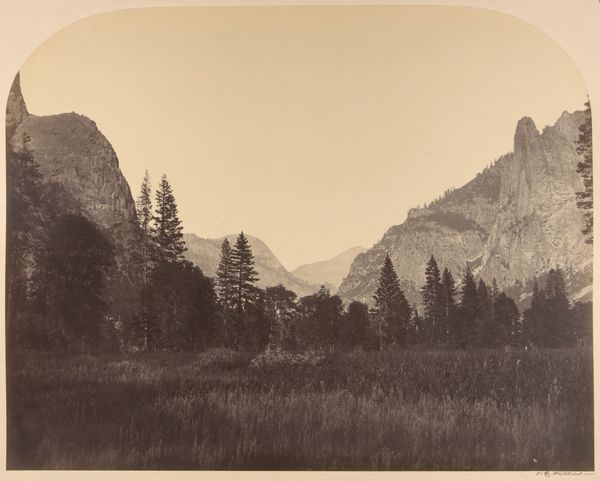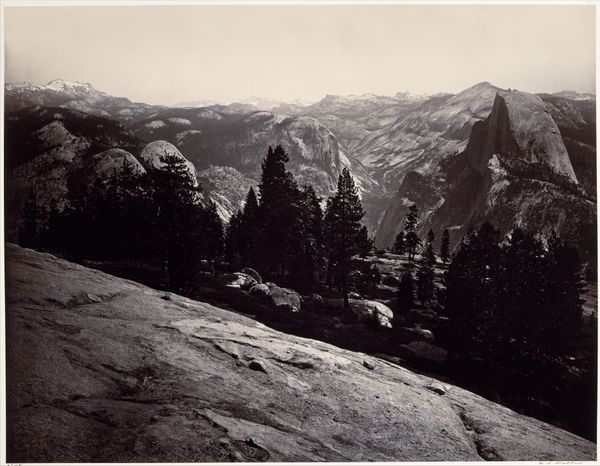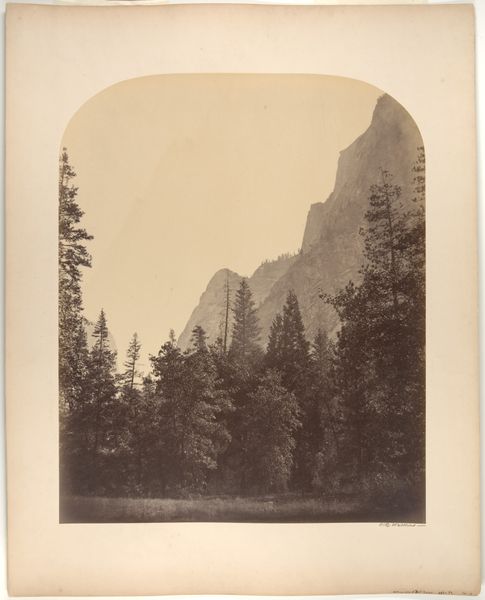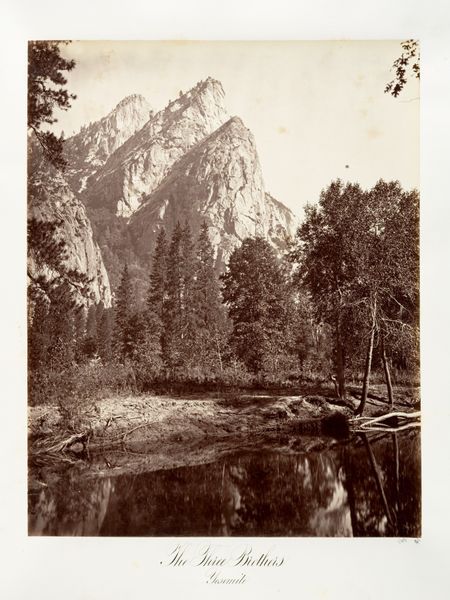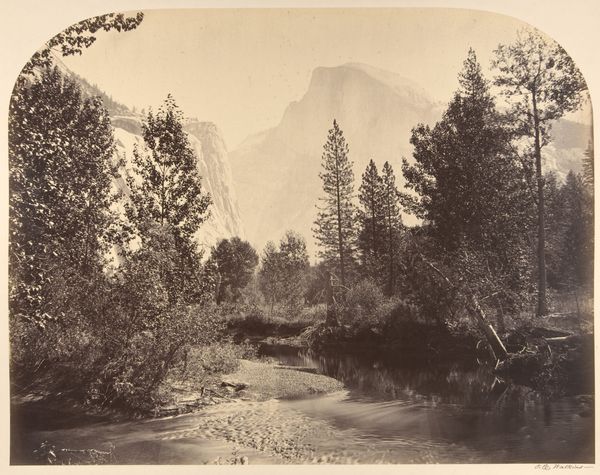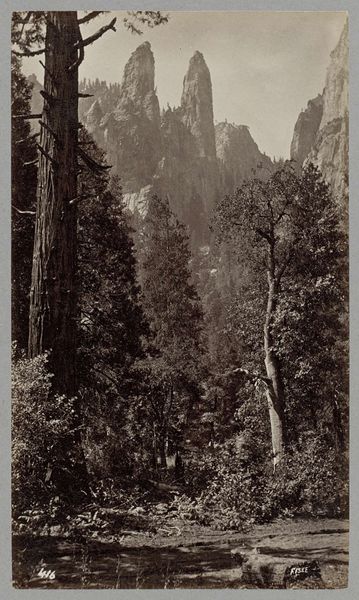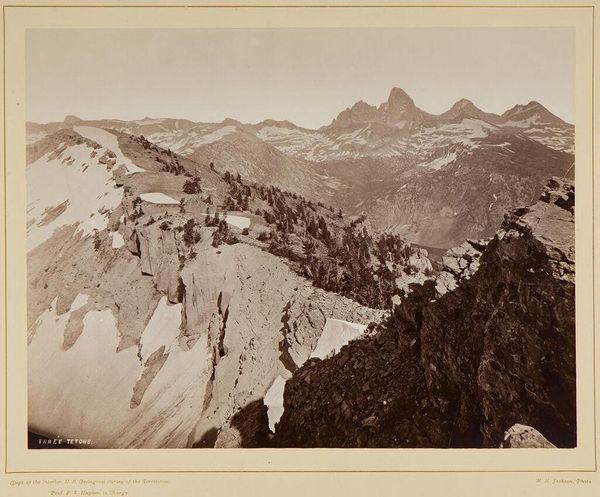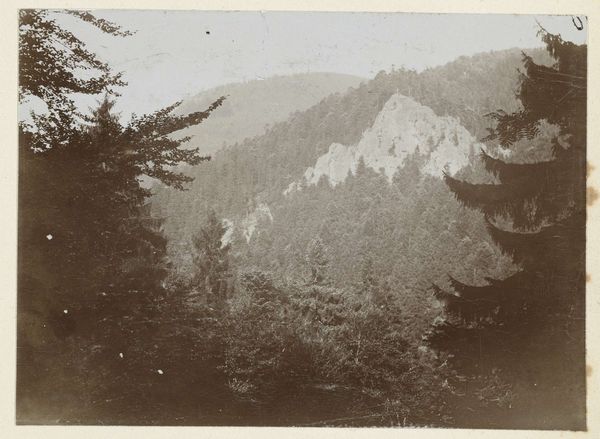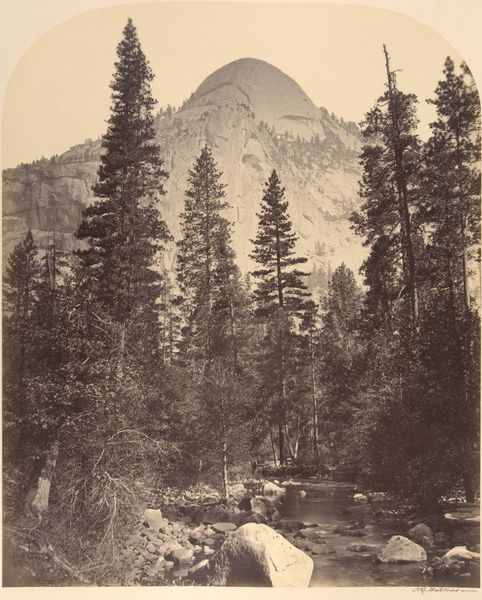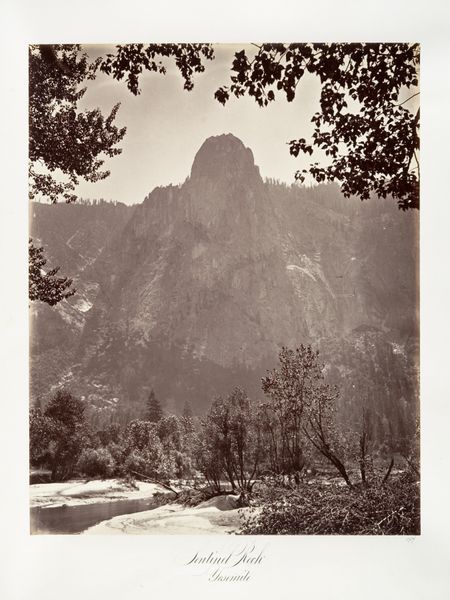
photography, gelatin-silver-print
#
pictorialism
#
landscape
#
nature
#
outdoor photography
#
photography
#
mountain
#
gelatin-silver-print
#
realism
Dimensions: height 224 mm, width 283 mm
Copyright: Rijks Museum: Open Domain
Editor: Here we have Gustave Oddoux's gelatin silver print, "Gezicht op de Mont Aiguille nabij Grenoble," dating from around 1910 to 1940. There's a certain stillness in the landscape; what elements jump out at you? Curator: I see a photograph, but more importantly, I see the traces of labor and industrial processes that went into its creation. The gelatin-silver print wasn't some spontaneous outpouring of artistic genius, it was the result of very specific chemical processes, of industrial manufacturing of materials. How do we consider the economic factors impacting this choice of material? Editor: So you’re saying the material itself tells a story about production and access? How does that influence its reception? Curator: Precisely. This method democratized image-making, shifting photographic practices away from solely elite circles. Pictorialism tried to imitate painting. Look at the way Oddoux manipulates the medium, softening the focus, creating a hazy atmosphere. Is he perhaps trying to elevate photography to "high art" by imitating the effects of painting? To what extent does he succeed? Is that success due to technique or class bias? Editor: I never really considered the labour of making art; it’s usually about aesthetics for me! It's clear the manipulation speaks to a cultural desire at the time. Curator: Exactly! It’s not just about individual expression; it is equally tied to available material, socio-economic context, and audience expectations. What did landscape mean in France at the time? What ideological messages could these majestic landscapes communicate? Editor: Looking at it that way changes the image. Thank you! Curator: My pleasure. Remember that these choices never occur in a vacuum. Consider the implications!
Comments
No comments
Be the first to comment and join the conversation on the ultimate creative platform.
